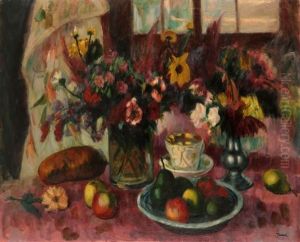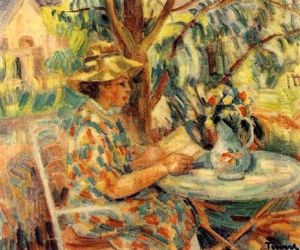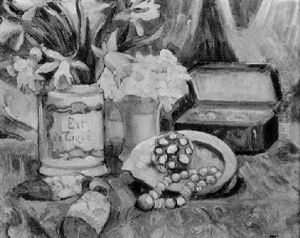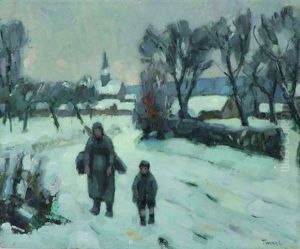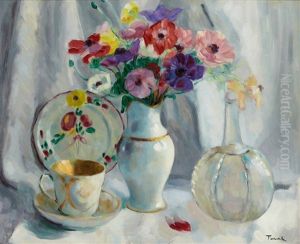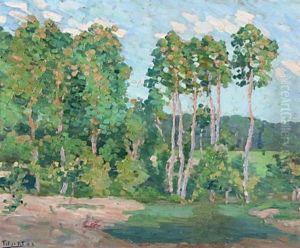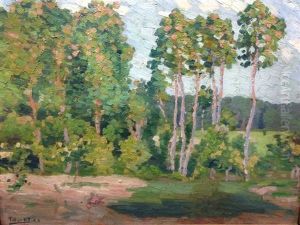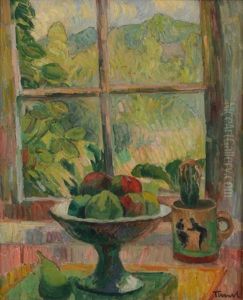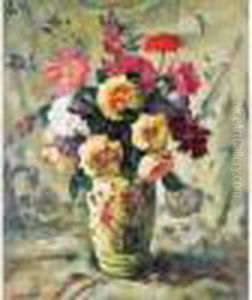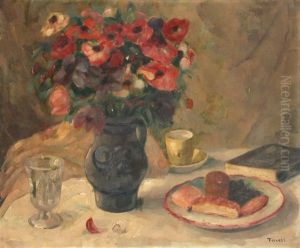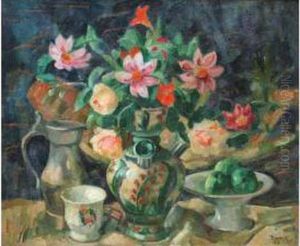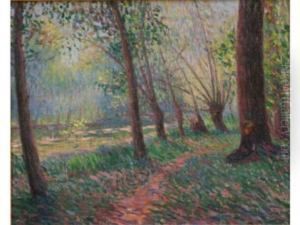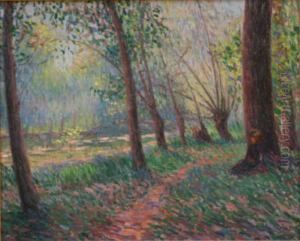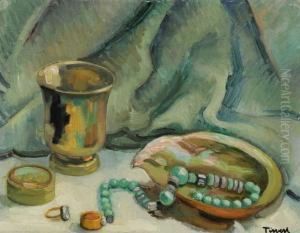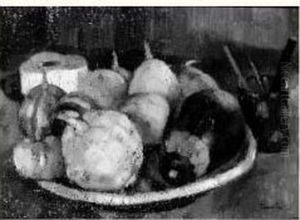Eugene Tirvert Paintings
Eugène Tirvert, born in 1832 and deceased in 1883, was a French artist whose contributions to the world of art, though not as widely recognized as those of his contemporaries, still hold a place of significance in the 19th-century European art scene. His life and work were emblematic of the period's artistic movements, reflecting the shifts from Romanticism to Realism, and eventually participating in the early conversations of Impressionism. Despite the lack of extensive documentation on his life, Tirvert’s oeuvre suggests a dedicated exploration of everyday life, a hallmark of Realist art, and a keen eye for capturing light, a precursor to Impressionist techniques.
Eugène Tirvert's early life was rooted in Paris, France, a hub of artistic innovation and the epicenter of European art in the 19th century. Details of his formal education and training are sparse, but it is known that Paris, bustling with salons and cafes where intellectuals and artists gathered, provided a fertile ground for his artistic development. During this era, Paris underwent significant transformation under the direction of Baron Haussmann, an urban renewal that not only changed the city's landscape but also its social fabric. This transformation provided new scenes and subjects for artists like Tirvert, who were keen on capturing the essence of modern life.
In his career, Tirvert exhibited a profound interest in the lives of the working class, a theme prevalent in the Realist movement. His paintings often depicted scenes of urban life, the burgeoning Parisian boulevards, and the contrast between the bustling city and the serene countryside. Unlike the Romanticists before him, who focused on the sublime and the extraordinary, Tirvert, similar to his Realist contemporaries, found beauty and depth in the mundane and the ordinary. This attention to the everyday lives of ordinary people was a significant shift in the art world, paving the way for the later developments in Impressionism.
Though not as celebrated as some of his peers, such as Édouard Manet or Gustave Courbet, Tirvert's work did contribute to the evolving landscape of French art. His approach to painting, characterized by a nuanced use of light and shadow, hinted at the Impressionist movement's emerging focus on light and its ephemeral qualities. However, Tirvert’s commitment to Realism's social and political themes remained evident throughout his career. His works, occasionally featured in the Paris Salon, were appreciated for their technical skill and their subtle yet poignant commentary on the shifting dynamics of French society.
Eugène Tirvert’s legacy, while overshadowed by the luminaries of his time, is preserved in a modest collection of works that continue to offer insights into the 19th-century French art scene. His death in 1883 marked the end of a career that, though not as prolific as some, contributed a unique voice to the chorus of artists grappling with the rapid changes of their time. Through his paintings, Tirvert captured the spirit of an era caught between the traditional and the modern, making his work a valuable, if underappreciated, part of art history.
